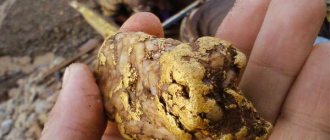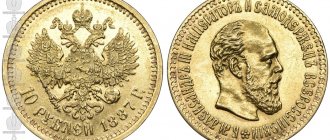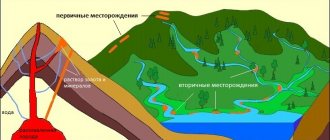In this material:
- Riches of the Urals
- Reserves of the Amur Territory and Yakutia
- The richest mines Solovyovsky mine
- Mine Udereisky
- Nevyanovsky mine
- Gradsky mine
- Dambuki
- Conder
- Drazhny
- Altaic
Gold is the most sought after material in the world. It was by this that the value of money was assessed for a long time, and for some time gold itself acted as money. This is explained simply, gold is a rare and valuable metal, which is very difficult to obtain. Jewelry is made from it and is an indispensable element in many industries.
This precious metal is rare, so it is being explored and mined all over the world. The map of deposits is constantly changing, because open places are depleted quite quickly, and new ones have to be found. This also applies to Russia, which has some of the richest reserves of the yellow metal. The map of deposits where gold is mined is heterogeneous. In Russia, the main reserve of 75 percent is concentrated in the Far Eastern region and the Siberian territories. These regions of Russia are gold-bearing; they provide the main production of the precious metal.
Magadan Region
The leaders in gold mining in the country are concentrated in the Far Eastern Federal District and the Siberian Federal District. Of these, the Magadan region ranks first in alluvial gold mining in the country. In total with ore deposits, at the end of 2017, 33 tons of gold were mined here. Moreover, the search began relatively late - only in the 30s of the last century. Now there are approximately 180 mining enterprises in the region; the main concentration of gold today is mined in the Pavlik ore deposit. Currently, the Cabinet of Ministers is negotiating to provide private miners with official legal permission to search for gold in the Magadan region, which will definitely fuel the interest of individual treasure seekers.
Chukotka Autonomous Okrug
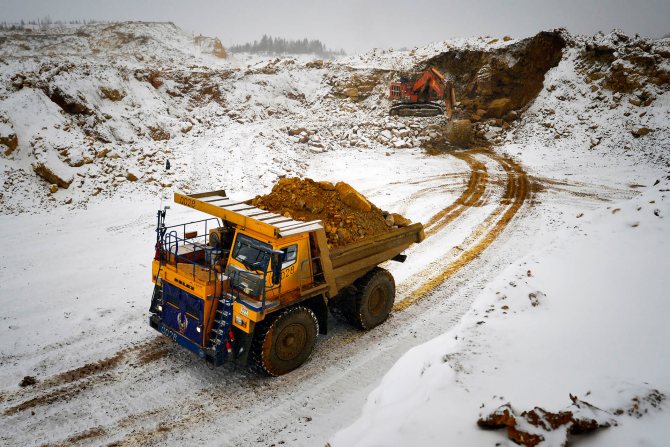
Chukotka ranks second in terms of gold production in Russia. The largest field here is the Dvoinoye deposit, one of the richest not only in Russia, but also in the world. Over the past year, a total of 25 tons of precious metal were mined in Chukotka. A significant part of the deposits was given to local gold mining cooperatives for purchase. In the region, black miners are also common in especially inaccessible and, nevertheless, gold-bearing places. The leadership is trying to actively fight them with the help of raids.
Geography of gold mining in the Russian Federation
In every country engaged in gold mining, the geography of where this metal is mined is constantly changing. Just 30-40 years ago, more than 50% of gold mining sites were concentrated in South Africa, but after about 10 years, this country’s share in global metal production decreased from 50 to 30%. The reason for this trend was that Western countries began to actively explore gold deposits on their territories. Examples of such states include Brazil, Chile, Uruguay, Colombia, the Philippines and Indonesia. Today, the main volume of world aurum production comes from China - this country annually produces several hundred tons of gold every year.
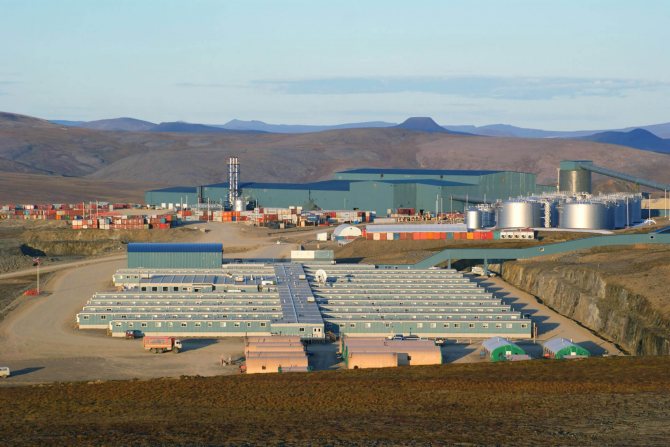
Map of gold mining in Russia
Gold is also actively mined in Russia, and gold mining in our country has its own characteristics.
Gold mining sites in Russia, as well as in all countries exporting this metal, can be divided into endogenous and exogenous. Endogenous deposits are considered to be the richest, with medium to high temperature hydrothermal deposits being the most common. An example of such is quartz veins.
Where is gold mined in Russia? To get the answer to this question, you should look at the physical map of the Russian Federation. All metal mining sites are close to the surface of the earth. Vivid examples of this include the Khakanja deposit in the Far East, Kuranahanskoye in Aldan, etc. In the northern part of the Krasnoyarsk region, gold is mined from magnetic copper-nickel deposits. Where is gold mined in Russia, in addition to the deposits listed:
- Rudny Altai.
- Chibizhk and Olkhovka, which are located at the junction of the Manusinsk Basin.
- Khabarovsk and Irkutsk regions.
Still, the largest-scale gold mining is carried out in the Urals. The largest gold deposits in Russia are concentrated here. In this territory, nature itself has created favorable conditions for the formation of gold - moderate climate, absence of severe frosts, etc. In addition, the appropriate infrastructure has been created here, allowing easy access to metal mining sites. By the way, not only precious metals are mined in the Urals, but also gems (over a hundred varieties).
The first metal deposit in the Urals was discovered by mankind back in 1745, and by the beginning of the twentieth century at least 100 gold ore deposits of the precious metal were known in Russia. In the Urals, the largest gold-bearing placer is considered to be the Bolsheshaldinskaya placer, located in the Moss swamp. This placer first began to be exploited in the nineteenth century.
Placer gold deposits have always been considered the most promising compared to primary ones, and there is an explanation for this: the development of placer deposits requires less financial costs and labor.
The Republic of Sakha (Yakutia

Yakutia is recognized as one of the largest gold deposit locations in Russia - approximately 20% of its total potential. There are both open-pit mines and, to a greater extent, hard-to-reach ones, where gold is a by-product of mining along with uranium and arsenic. About 800 deposits have been recorded here, the amount of material extracted over the past year reached 24.8 tons. A gold rush swept Sakha in the second half of the 19th century, after local residents, unknowingly, found expensive pieces of gold and gave them away to Russian merchants for next to nothing. Today, 44% of alluvial gold reserves are located in one deposit in the valley of the Bolshoi Kuranakh River, where many small and medium-sized entrepreneurs work.
Types of gold deposits
There are two main types of deposits:
Primary or primary deposits alluvial or secondary deposits formed from them
Formation of primary gold deposits
The formation of primary deposits is associated with magmatic processes. The Earth's magma, unlike the crust, contains an increased concentration of gold. As a result of volcanic activity, streams of magma burst to the surface.
Magma is a melt of various compounds, the melting points of which vary greatly. After breaking through to the surface, the magma begins to cool. The first to crystallize are refractory substances, which at sufficiently high temperatures turn into a solid state. However, a moving mass of more fusible compounds continues to circulate inside the frozen mass. Through faults and cracks in the cooled magma, this melt shoots into the surrounding rock, forming veins. The veins have a variety of shapes, structures and sizes, going several kilometers deep into the earth. Inside them, in turn, hot solutions of salts containing gold, formed from steam, circulate. As a result, when completely cooled, the salts are destroyed and the gold crystallizes inside the vein in almost pure form.
It should be understood that when magma is released and cools, a huge number of different reactions occur. They involve both substances of the magma itself, and minerals from the rocks of the earth’s crust that host the magma, as well as water. The course of the process and the final composition of the compounds resulting from the complete cooling of the magma may vary. Thus, primary gold deposits can be formed in several ways, but they are always associated with igneous rocks.
The main mineral of most veins is quartz or silicon oxide (SiO2), less often - calcite, albite, barite, chlorite, sericite, tourmaline, chalcedony. In addition, a significant part of gold-bearing ores is formed by sulfur compounds of metals:
- iron - pyrite or iron pyrite (FeS2), arsenopyrite or arsenic pyrite (FeAsS), pyrrhotite (most often Fe6S7);
— lead — galena or lead sulfide (PbS);
– copper – chalcopyrite or copper pyrite (CuFeS2)
- zinc - sphalerite or zinc sulfide (ZnS).
Gold in primary deposits rarely exists in its pure form. It usually contains some amount of other metals. The majority of impurities are alloys with copper and silver. There are also deposits in which gold contains platinum and other platinum group metals.
Part of the gold is extracted as an associated metal during the development of deposits of copper, zinc, lead, silver, platinum group metals and nickel.
In general terms, primary gold deposits were formed in zones of magmatic activity, namely in the mountains.
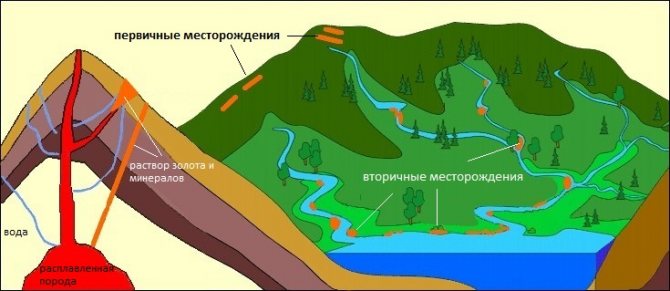
Formation of secondary gold deposits
Rocks containing primary gold formations were subjected to continuous physical and chemical attack, which led to their destruction. Temperature changes, weathering, precipitation and groundwater, the action of microorganisms and plants - all this leads to the gradual destruction of rocks. As the rocks break down, they release the gold they contain. It begins its long journey from the mountains down to the valley, forming secondary or placer deposits.
Water plays a major role in the movement of gold. It gradually erodes mountain ranges, carrying down pieces of rock, transforming, crushing and grinding them. Gold, due to its inertness, does not react with water or any other substances; it remains unchanged.
We owe the formation of placer deposits to another of the main properties of gold - its unique density or heaviness. Since gold is one of the heaviest metals, it tends to accumulate or be deposited in places where lighter compounds are washed away by water. While the gold is contained within the minerals surrounding it in the primary deposit, it moves downward fairly quickly. However, along the way, the minerals are crushed and ground down, gradually releasing gold. After release, gold, due to its gravity, cannot be carried far by the current of water and settles in places where the relief forms various types of obstacles in the path of water.
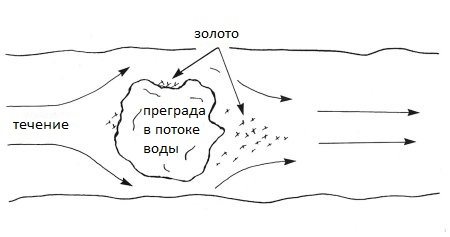
Placer deposits are very diverse in size, method and area of formation. The natural landscape has changed repeatedly over the past millennia - rivers appeared and disappeared, glaciers advanced and retreated, sea levels changed, mountains were destroyed. Often, no trace remains of the original deposit, and the gold from it forms a placer over a considerable distance. A rich placer is not necessarily formed from a rich vein; gold is sometimes carried to one place from several veins. Over time, secondary deposits can also be destroyed, gold from them migrates and forms new placers.
Placer gold is usually easily accessible and does not have to be mined from hard ore as in primary deposits. At the dawn of mankind, the first discoveries of gold were made, most likely, in alluvial deposits - in the beds and along the banks of streams and small rivers, people found small nuggets of metal with amazing properties.
Irkutsk region
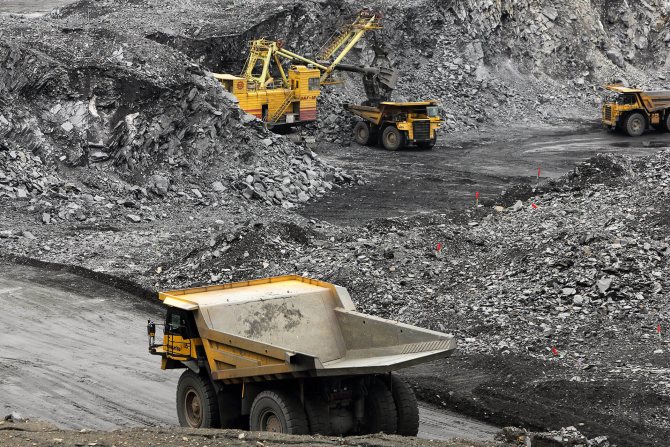
The Irkutsk region took fourth place in gold production in 2017 - about 23 tons of ore and placer metal were discovered. Here, gold mining is one of the oldest popular occupations in the region; active development began in the mid-19th century. Unlike the previous case, the majority of finds here are alluvial metal. Today more than 40 enterprises are searching for it.
Walkthrough of the quest “Treasure of the Dead” (Le Tresor Des Morts)
Where to get it: Exclusive pre-order bonus for the Digital Edition or Special Edition of Red Dead Redemption 2. This is an exclusive bonus mission not available in the Standard Edition!
Reward: 5 gold bars (can be sold for $2,500).
Treasure of the Dead Map 1
: We find several burnt houses. We go inside one building that is not burned, and we find a map next to a dead body.
Treasure of the Dead Map 2
: In Saint Denis there is an underground passage under one of the buildings (entrance in the screenshot). In the underground passage, the treasure map is in the wall, next to a wooden box.
Treasure of the Dead Map 3
: Inside a small building in the Saint Denis cemetery.
Here you will find 5 gold bars worth $2500.
Amur region
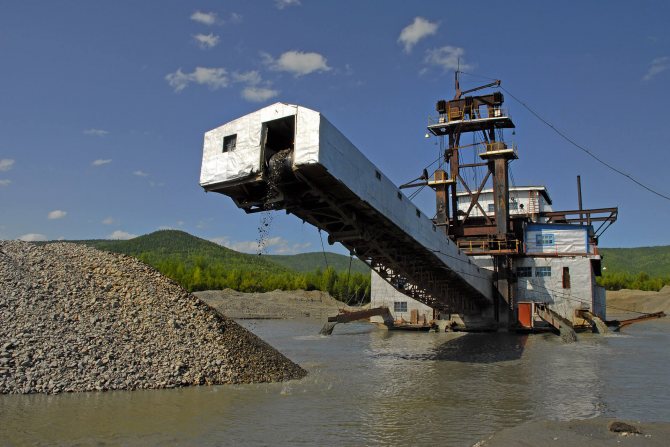
Amur region: up to 20-22 tons of gold are mined here annually. One of the most popular historical mines is Solovyovsky. It is also a city-forming enterprise. The main gold production here comes from ore. The largest number of floating “gold factories” are located here - 9 dredges - complexes for the development of flooded mineral deposits. Due to the fact that gold in the Amur region is mostly ore, the treasured stone can be found here completely by accident. This happened to one of the residents of the village of Zolotaya Gora (a very symbolic name), who noticed an almost kilogram piece of gold worth 2.5 million rubles. The law is currently working against private gold mining; the man took the jewelry for himself, for which he would have been threatened with imprisonment for up to 5 years, but he confessed and gave up the find.
Walkthrough of the mission “High Stakes Treasure Map”
Where to get it: Chapter 3, after finishing the mission “The New South”.
Reward: 3 gold bars (can be sold for $1,500).
Start: From a random treasure hunter who gets flagged when you approach him. He can appear in different areas in random order. The map below shows possible locations where it will appear.
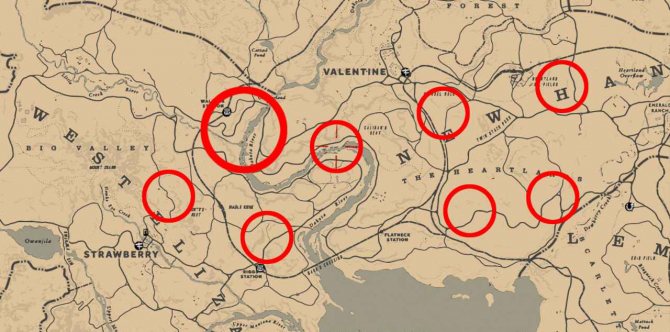
You need a lasso to tie it up. He throws his card and it can be taken. If after three meetings with him you do not have a card, you can buy one from a merchant.
High Stakes Treasure Map 1
: Behind Cumberland Falls (Waterfall at Cumberland Falls). We approach the wooden log on the right side of the waterfall.

High Stakes Treasure Map 2
: In Barrow Lagoon, we climb a small hill and find a stump that is stuck between two rocks. There will be a treasure in it.
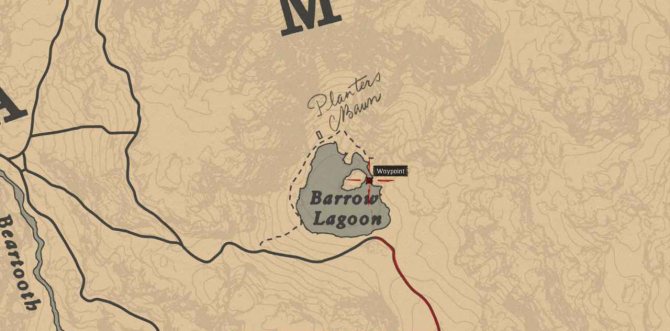
High Stakes Treasure Map 3
: At Bacchus Station we go down from the side of the mountain to the lower rocks above the river (we go down from platform to platform). You may find a treasure hidden in a rock.
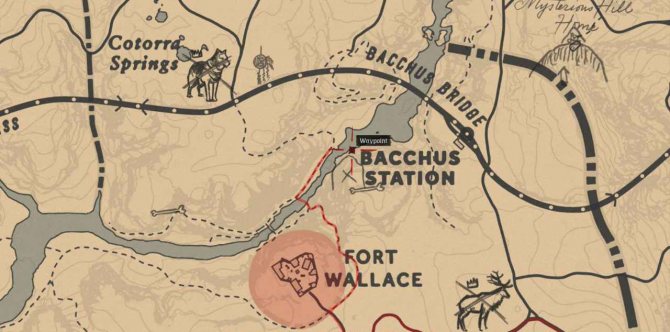
We get 3 gold bars, which cost $1,500.
Transbaikalia
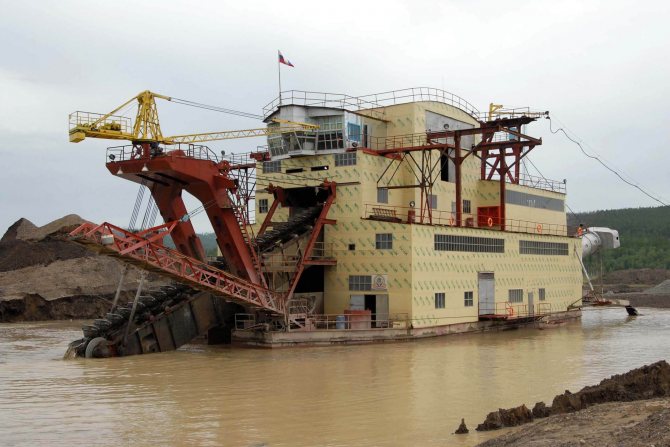
Transbaikal region. The search for ore here has been going on since the 17th century, but it was only in the 19th century that the desired gold was discovered. For a long time, it was here that private ore mining especially flourished, where all adventurers flocked for wealth. Especially developed here are the Novo-Shirokinsky and Aleksandrovsky mines, as well as Mangazeya Mining. According to some reports, black miners are actively working in at least five districts of the region. In addition, the residents themselves are urging the Russian government to publish a new law regarding private gold miners and support the initiative of the Magadan Region.
Chelyabinsk region
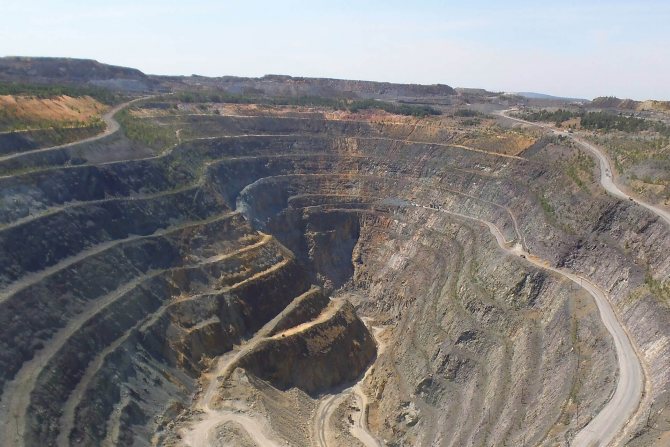
Chelyabinsk region, where 7.1 tons of gold were discovered last year. The three largest deposits here are: Svetlinskoye, Kochkarskoye and Western Kurosan. However, two places are especially popular among local gold miners: the Miass River valley and Plast. The river waters really deserve attention, because according to geologists, every section of the flow here is rich in gold grains. In addition, jasper is also found in the waters of Miass. However, in addition to the work of prospectors, black archeology is also actively developing in the region. Information on where to look for gold in Chelyabinsk can be found freely available on the Internet. People share skills, sell equipment, and buy and sell found ancient coins and jewelry.
How is gold mined?
Despite the fact that metal mining techniques are constantly being improved in the gold mining industry, gold has been mined by panning for several hundred years. Such a simple method of obtaining metal is considered effective due to the fact that aurum itself has a high density, which means that it is significantly heavier than other elements of gold ore. Previously, gold was washed using sheep skins, which were placed at the bottom of rivers originating in the mountains. Thanks to this, grains of gold got stuck in the hairs, after which the skin was taken out and the metal particles were shaken out of it.
How gold is mined in Russia today, or more precisely, with what equipment:
- Minidrag: is a device that resembles a barrel. Using a mini-dredge, productive sand is washed out on river shallows.
- Mini-sluices: These are more complex devices for washing gold.
- Metal detector: this device is advisable to use for searching for gold in small deposits.
Today in Russia, not only large-scale but also small-scale gold mining is popular. In order to engage in amateur metal mining using a metal detector or mini-dredge, it is enough to conclude an agreement with the owner of the gold mining license. After this, you can search for gold in man-made dumps without any obstacles. Many will most likely be interested in the answer to the question of how gold is mined in Russia in small deposits, as well as where to look for such. The thing is that there are so many small metal birthplaces in the Russian Federation that it is impossible to trace their geography.
There are many benefits to gold panning for gold miners. First of all, in order to mine gold, you need to start purchasing inexpensive devices for this purpose. In addition, a person is given a wide choice of places to extract metal, and the knowledge necessary for this activity can be gleaned from a large number of thematic reference books, Internet resources, etc.
The Republic of Buryatia
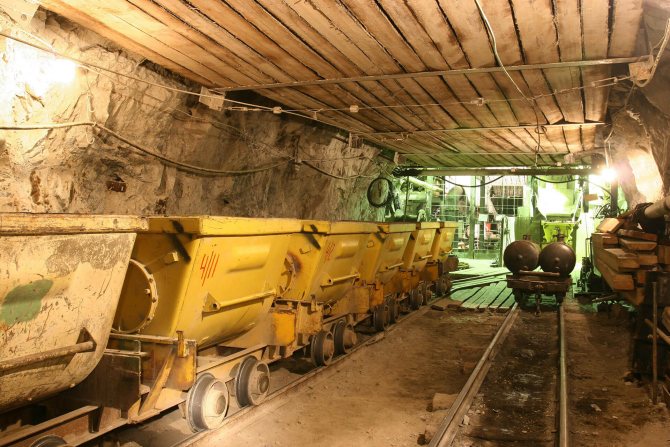
The gold mines of Buryatia produced 5.6 tons of precious metal last year. One of the richest is Kedrovka. Old-timers of Buryatia also enthusiastically recall the absence of legal punishment for personal finds. In difficult post-war times, found grains of gold were the main income of many families, and parents and children went in search: if you find it, hand it over, you will get money, many remember. Now, to the question “Where can I find gold in Buryatia?” It’s difficult to give a definite answer; most of the deposits are owned by large industrialists, but local residents talk about finds in the rivers of the Khorinsky and Eravninsky districts.
Sverdlovsk region
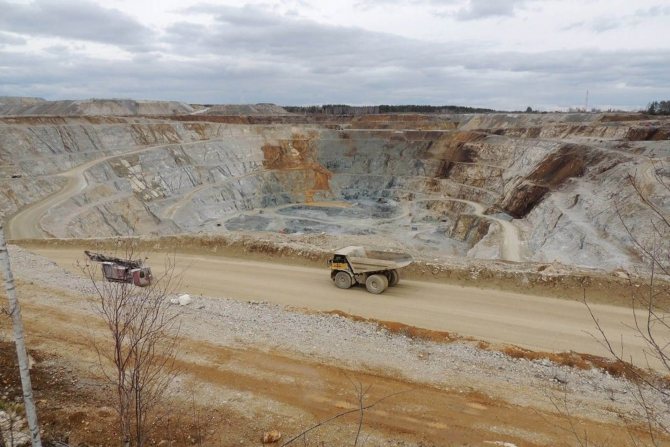
The Sverdlovsk region annually provides up to 8 tons of gold to the total production volume. In the Urals, they tried to look for precious ore back in Rus', especially during the time of Ivan IV the Terrible, but they really succeeded in this only under Peter I. Often, it is from here that you can hear news about the capture of the next black miners. The most famous mines in the Sverdlovsk region are Krasnooktyabrskoye, Sosvinskoye, Vagranskoye, Chakinskoye, Kamenskoye, Serebryanskoye and Nevyanskoye. Both alluvial and ore specimens are found here. The interest of gold miners is especially aroused by the story of a nugget weighing 14 kg found in 1935.
Republic of Bashkiria
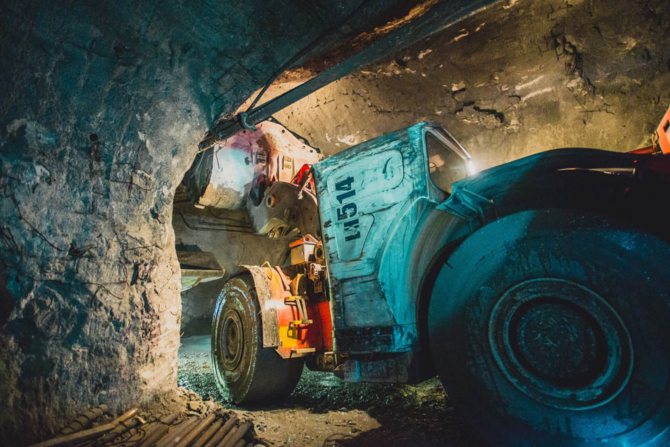
Bashkiria completes our ranking of the richest gold mines in Russia, but is far from the last in its importance. Up to a ton of gold is found here every year. The main gold deposits of Bashkiria are: Baimaksky, Beloretsky and Uchalinsky ore districts, as well as the Sakmaro-Tanalyk placer zone. In Bashkiria in 1992, a monolithic piece of gold weighing almost 5 kg was found, they called it the “Irendyk Bear” for its location and shape; since then, adventurers have not lost hope of finding an even larger nugget.




